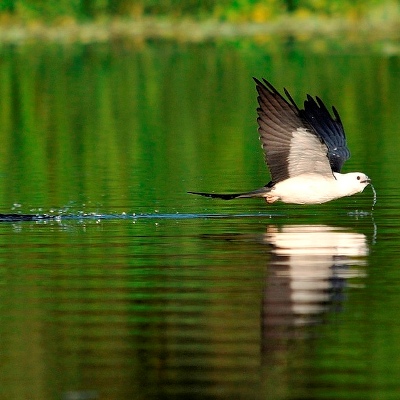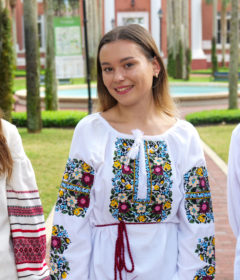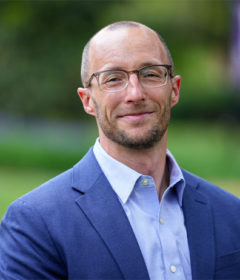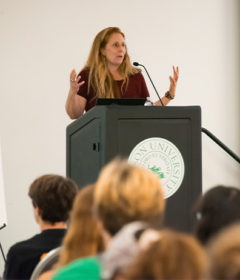Zoologist Peter May shares passion
It was a cool spring morning in northern Virginia and 9-year-old Peter was absorbing the early sun as he meandered down the country road near his home in historic Manassas. He peeled and poked his stick into the new spring ground, curious to what the cold winter had left behind. Raised in a military family, Peter Gregory May was taught to appreciate the smallest of things that living free offered him. Continuing his stroll, he looked up at the tiny buds on the apple trees that lined the road. The attractive pink blossoms weren’t the only things that pleased his young wide-eyed glance; there was a delightful yellow he hadn’t before seen.
Hundreds of warblers had blanketed the trees. Young Peter had encountered a large bright gold migration wave feeding on the blossoms after their long northern flight home. It would be a cherished memory that would influence him on a lifelong journey to discover more of nature’s charming creatures. That memory from Prince William County, Va., along with others collected in North Carolina and Hawaii – places where Peter’s Marine father would move his family while answering to the call of duty – would be as strong today as the impression it made almost 45 years ago.
“I really never considered myself a ‘science nerd’ growing up,” said May, “but I did like school, and like most kids, loved the outdoors and fishing with my dad. I was also fascinated with butterflies and flowers. I think I was about 14 when I first held a set of binoculars. They were a neighbor’s. Seeing the detail of birds and other animals changed things for me.” Not realizing it at the time, May always tried to find an excuse to be outside. Studying ecology was just a means to the end. “It wasn’t like I intentionally set out to go into this field. It just happened. It wasn’t until grad school, and having opportunities like taking a class with Archie Carr (the extraordinary father of sea turtle conservation), when I actually knew this was what I wanted to do for a living. I was fortunate to go on several field trips with Dr. Carr in his later years and witnessed him jumping onto a rather long, Coachwhip snake while much younger students and assistants looked on.” May described Carr as humble, down-to-earth and very sharp, similar qualities May himself shares.

After completing his freshman and sophomore years at St. Andrew’s Presbyterian College in Laurinburg, N.C., May graduated from George Mason University in Fairfax, Va., with a Bachelor’s in Biology (1977) and a Master’s in Biology (1979). His thesis was on the “Secondary succession and breeding bird community structure in the eastern deciduous forest formation.” He then earned his Ph.D. from the University of Florida in ’85 in Zoology. His dissertation was “Foraging selectivity in adult butterflies: Morphological, physiological, and ecological factors affecting flower choice.”
Professor May has conducted field research and published, or co-authored, numerous papers on herpetology (the study of amphibians and reptiles), ornithology (the study of birds) and entomology (the study of insects). Over the years, he has also appeared in popular publications such as Reptile and Amphibian Magazine with Dr. Terry Farrell and on the National Geographic Channel. This is because May spends many days in the field with his students, or his camera, indulging in the wildlife at any one of a dozen favorite spots he frequents. (In addition to locations stated in the photo captions, May and his students frequent Lake Woodruff, Lake Monroe Park, Beresford County Park, Paisley Road, Lake Dias and any of the springs and wetland areas of the St. Johns River Water Management District.) And when he’s not busy with classes or research, he may just be holding, in place of his D7000 Nikon, a copy of anything written by one of his preferred writers: Jim Harrison, Cormac McCarthy, Joyce Carol Oates or William Styron.
May’s love for photography runs deep and is a natural counterpart to Biology research and teaching, which started for May at UF in 1979 where he taught evolution, vertebrate anatomy, general biology, pollination ecology, cells and organisms, and genetics. “It’s difficult to pinpoint what my favorite subject is to photograph,” said May, “but birds are pretty much near the top because, aesthetically, they are unsurpassed by any other life form.” May reported that even with a 500 mm lens at a shutter speed set at 1/500 – 1/1000 and an ISO set at 1600, one can rarely capture a perfect shot in natural light of the impressive fast-twitch movers. And his favorite bird species? Corvus brachyrhynchos, the American Crow. “Despite being viewed by most people as a pest species,” said May, “their behaviors are so complex. Crows are extremely aware, highly social, and their vocalization is quite varied with caws and rattles. I’ve heard sounds I didn’t know crows were capable of making. They never cease to amaze me.”
THE MAY EFFECT
Stetson University was supposed to be a one-year appointment for May. He was hired in ’88 to temporarily fill the position of Dr. Keith Hansen ’49 following his retirement. Twenty-four years later, May leads lectures and laboratory instruction that have impacted Stetson’s Biology program and the many students who have been fortunate to take one of his classes or have him as an advisor.
“Dr. May taught me how to think critically, write scientifically, research independently and reject mediocrity,” said Biology graduate John Rand ’07. “He was my faculty advisor, and has continued to be an invaluable source of information, and friend, as I complete my Doctorate of Veterinary Medicine from UF this May. I appreciate good professors very much and can’t adequately articulate how thankful I am for Dr. May’s guidance, not only in Biology, but in all things.” Rand, who admits using May’s photography to assist in identifying species of orphaned and injured local wildlife in a clinical setting, and for his desktop wallpaper, plans to return to DeLand following graduation to work at FloridaWild Veterinary Hospital.
“Professor May instills an appreciation for experiencing the great outdoors,” said Biology and Religious Studies double major Rachel Burnett ’12, for whom Dr. May served as academic advisor and senior research advisor to her wading-bird and hydrology study. “Both in the classroom and in the field, Dr. May has an unparalleled enthusiasm for his work and the natural world. As I continue my studies in plant and forest biology at graduate school, I take with me a better understanding of the various interactions between plants, birds and natural resources.”
“Dr. May helped me out when I ran into problems,” said Biology and Environmental Science graduate Sam Rabin ’09, “but he knew and trusted me enough as my primary mentor for my senior thesis project to let me handle most everything on my own. This independence really boosted my confidence as a researcher, and prepared me for my current position.” Rabin is in his second year of his Ph.D. in Princeton’s department of Ecology and Evolutionary Biology (studying global fire modeling). Rabin added, “Dr. May’s expertise and enthusiasm in Ornithology pushed me to consider myself a ‘birder.’ I continue the hobby today in a great birding location, and interact with professional avian ecologists.”
Nature is May’s church. “I have magnificent feelings of awe when I’m outdoors,” said May, “and I just love introducing students and others to the environment and its abundant species.” May explains his love for soaking up nature’s beauty as one of life’s inexhaustible pleasures in his 300-page manuscript titled Emeralda Mornings that was completed on a nature sabbatical in 2002.
Not many things in life are certain; however, for this Stetson professor, whether he is enjoying the elegance of the Ruby- crowned Kinglet or Golden Phoebis butterflies from his own backyard in DeLand or hearing the singing of a Bobolink flock at a distance buried in thick vegetation completely obscured from sight at Emeralda Marsh Conservation Area in Eustis, Fla., what is certain for Peter May, he is never bored with nature and forever impressed.
View more of Professor May’s nature photography on his website and on his Flickr site. Read other Stetson stories in the Winter 2012 issue of SU Magazine. Read past issues of SU Magazine.
By Lisa Habermehl



